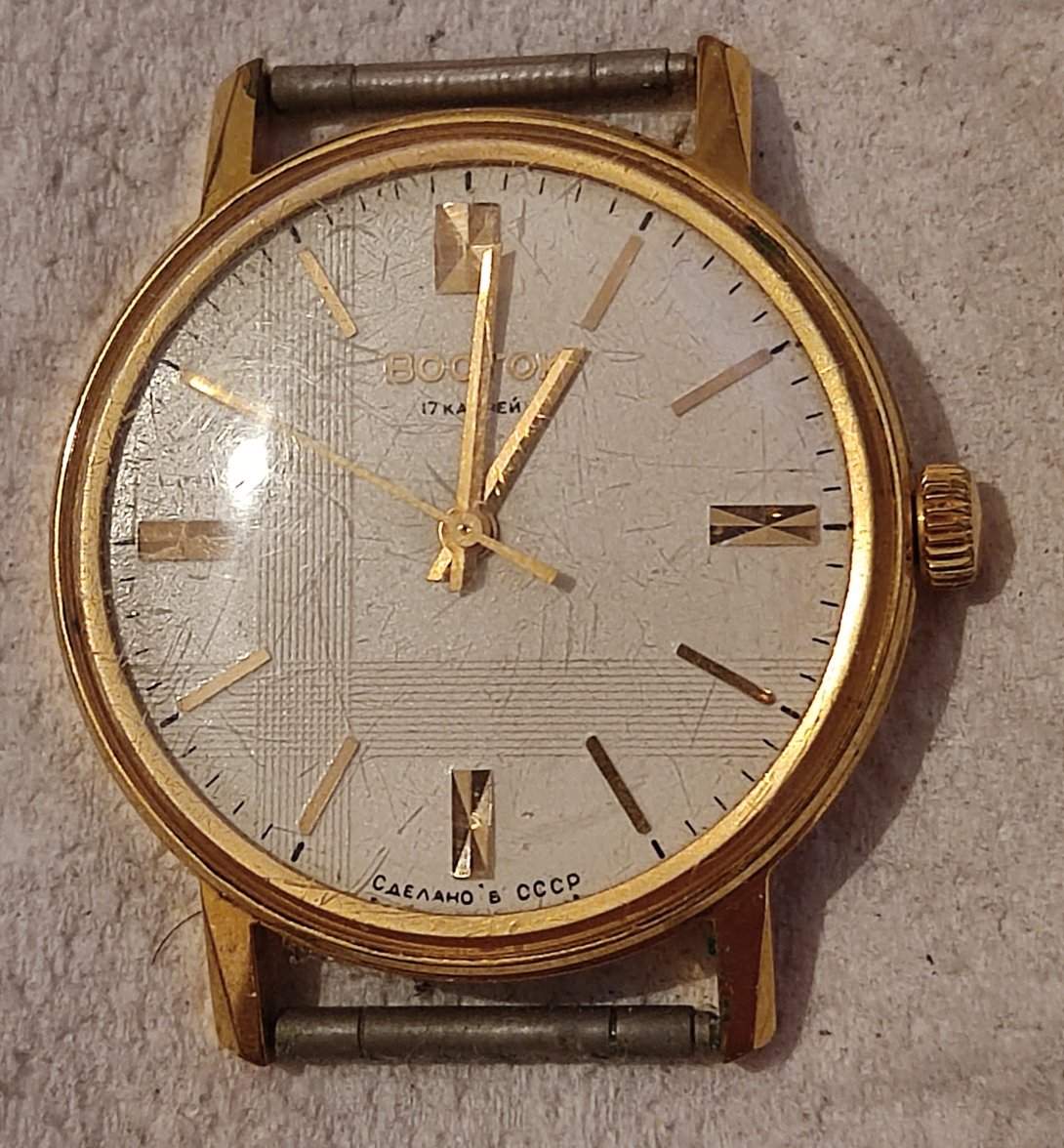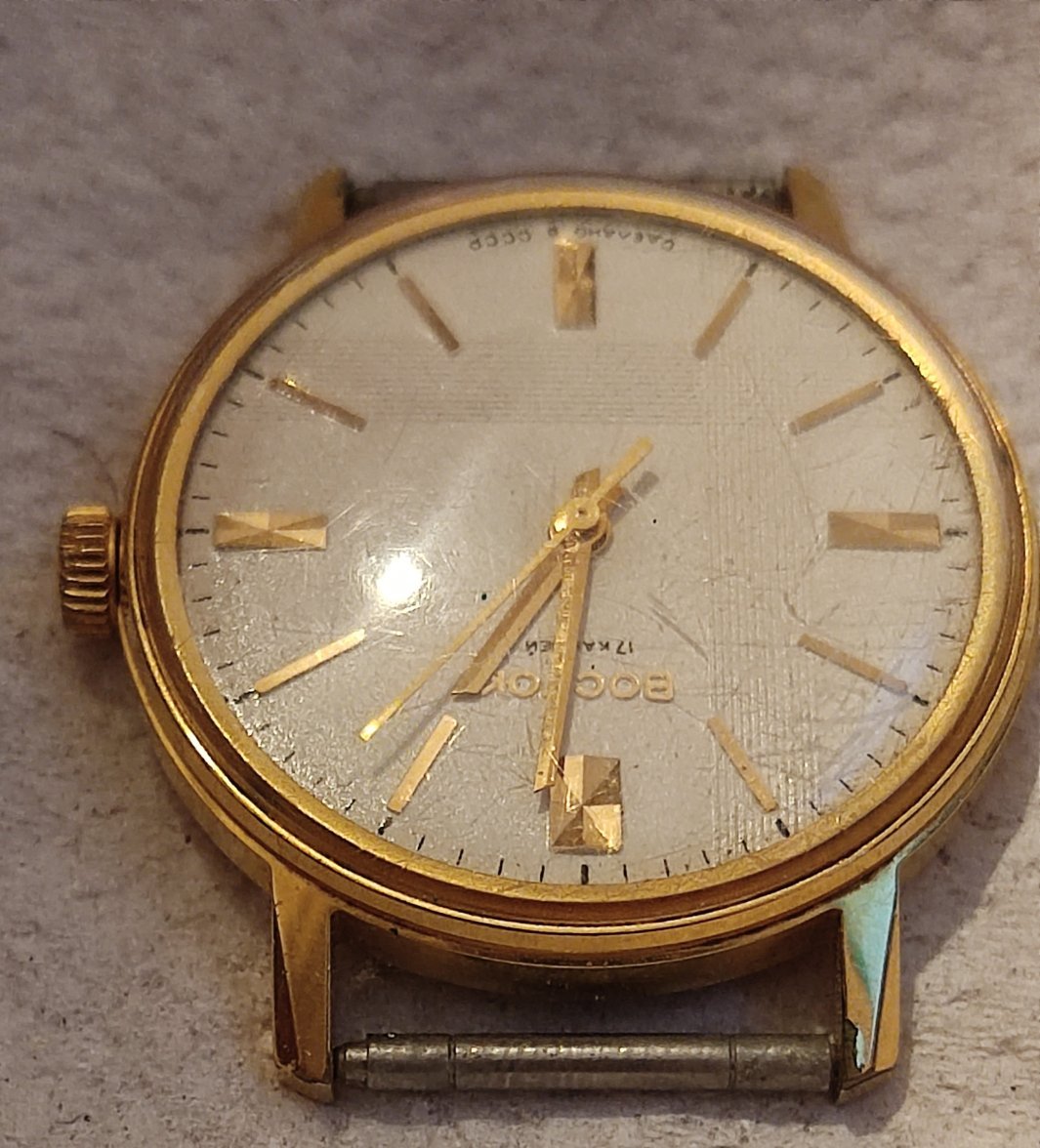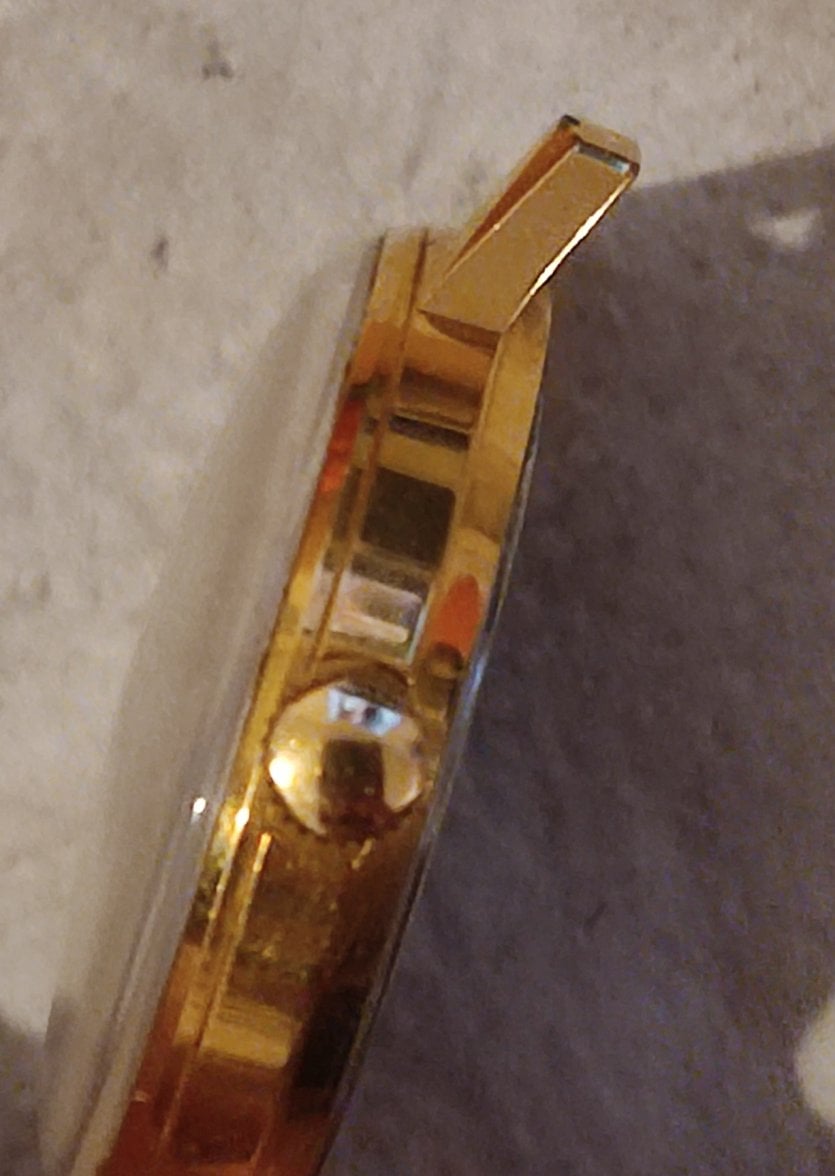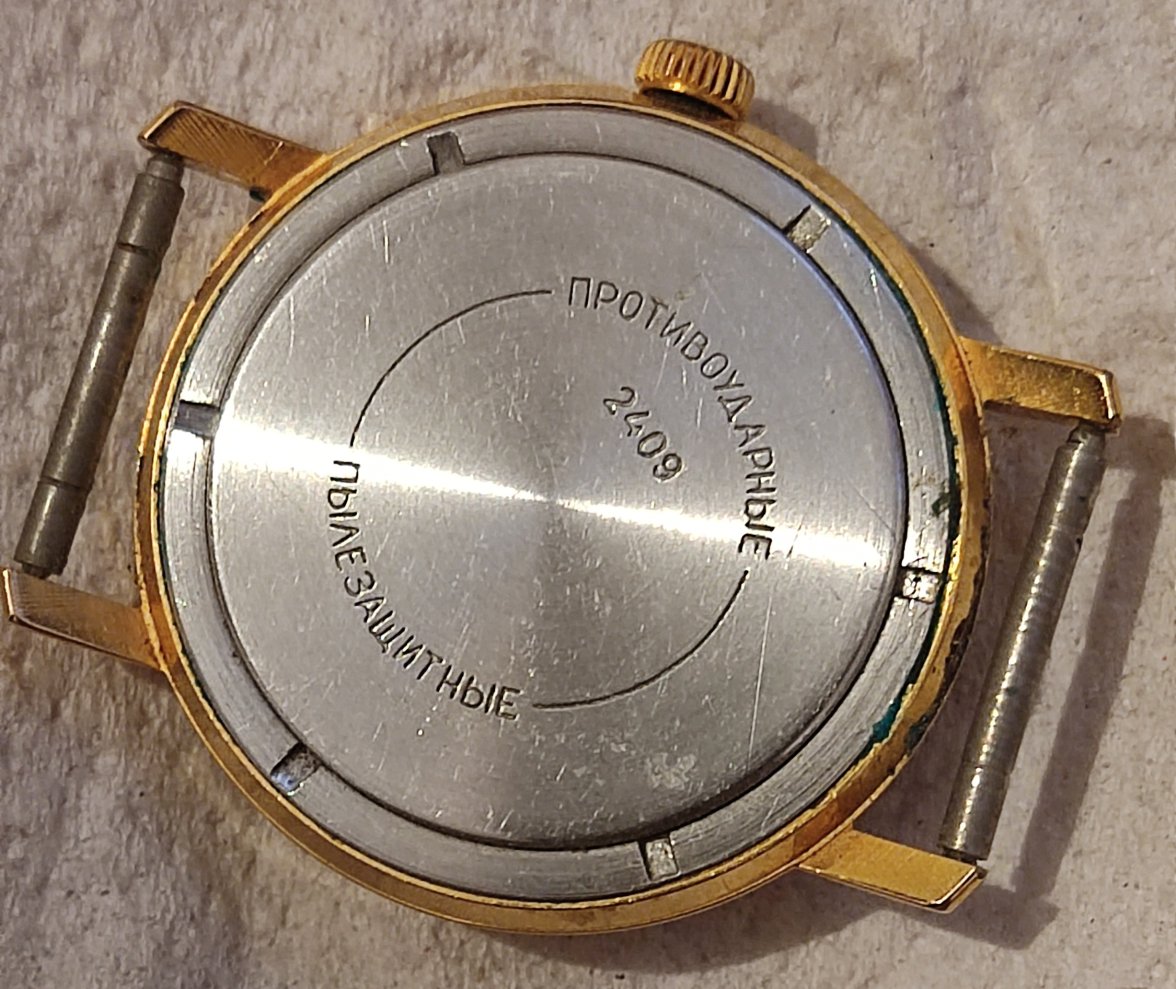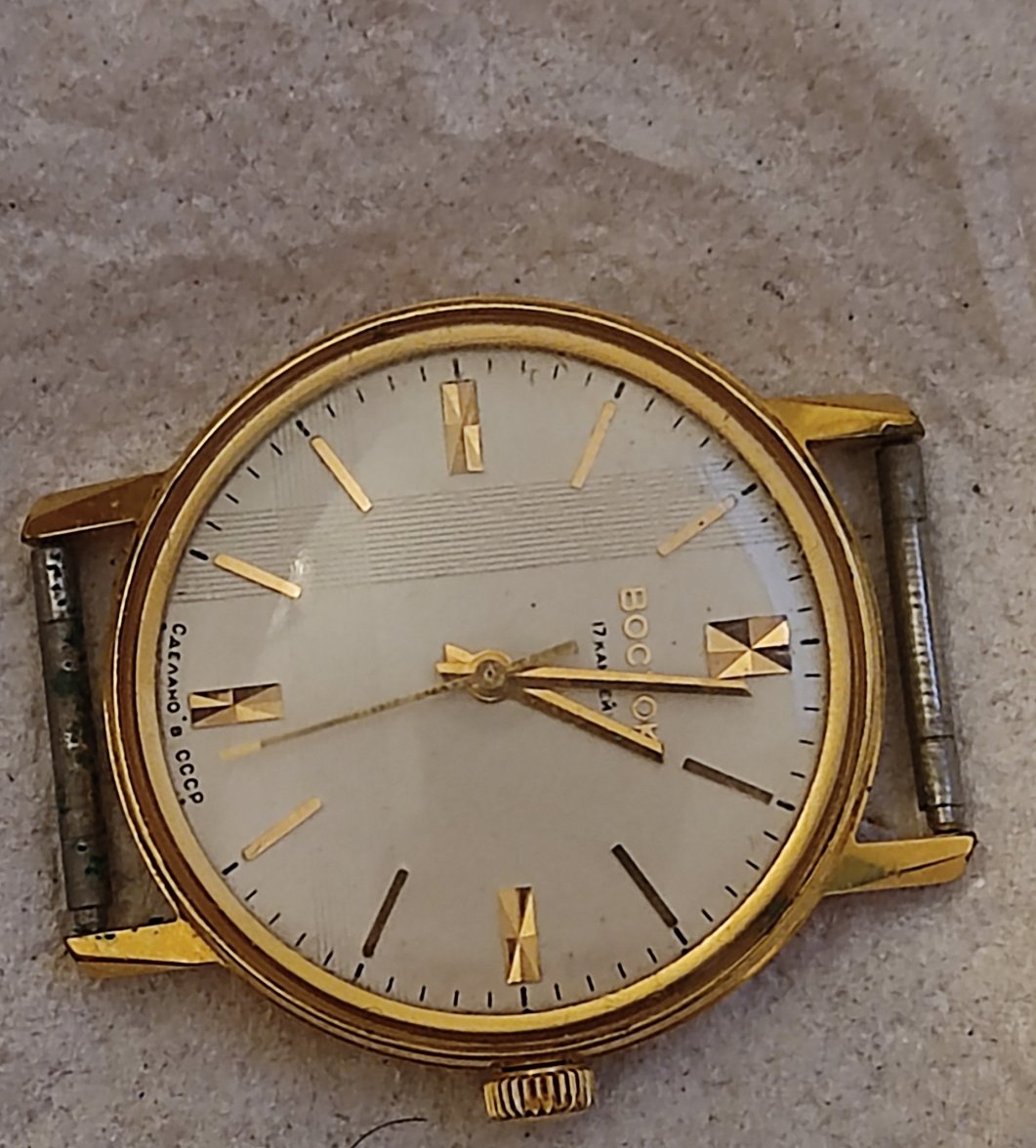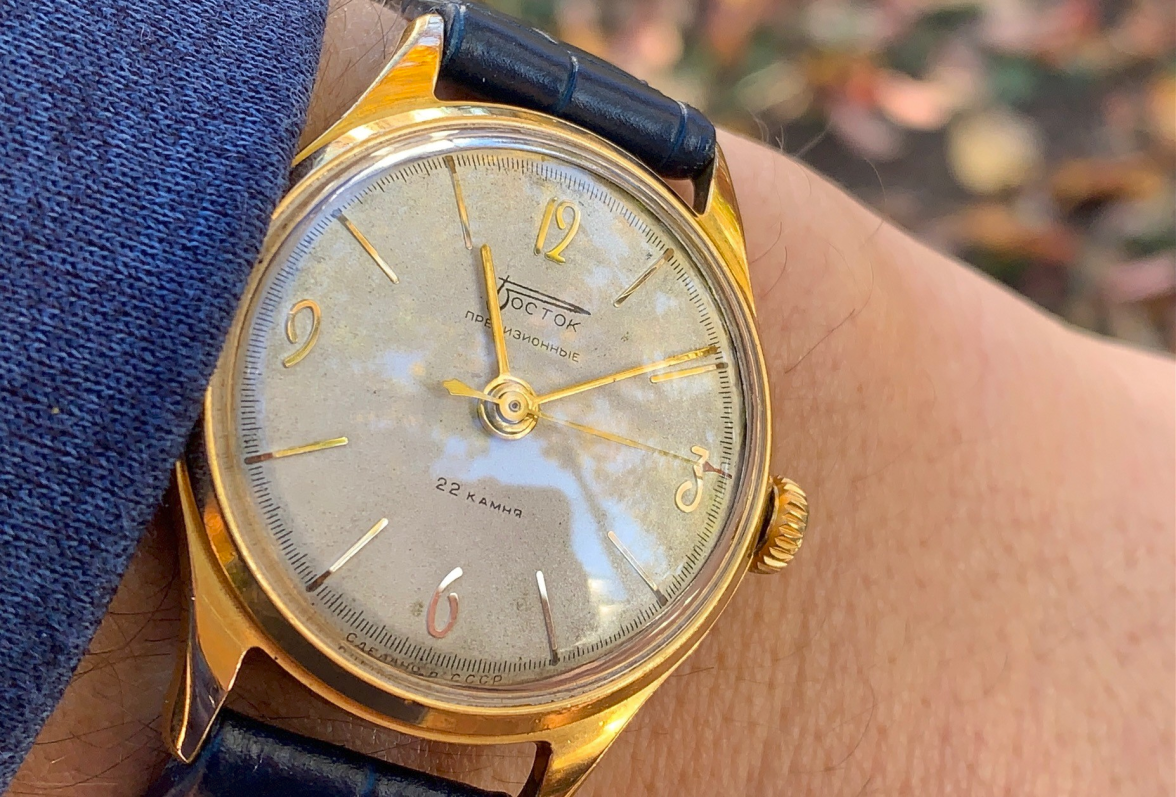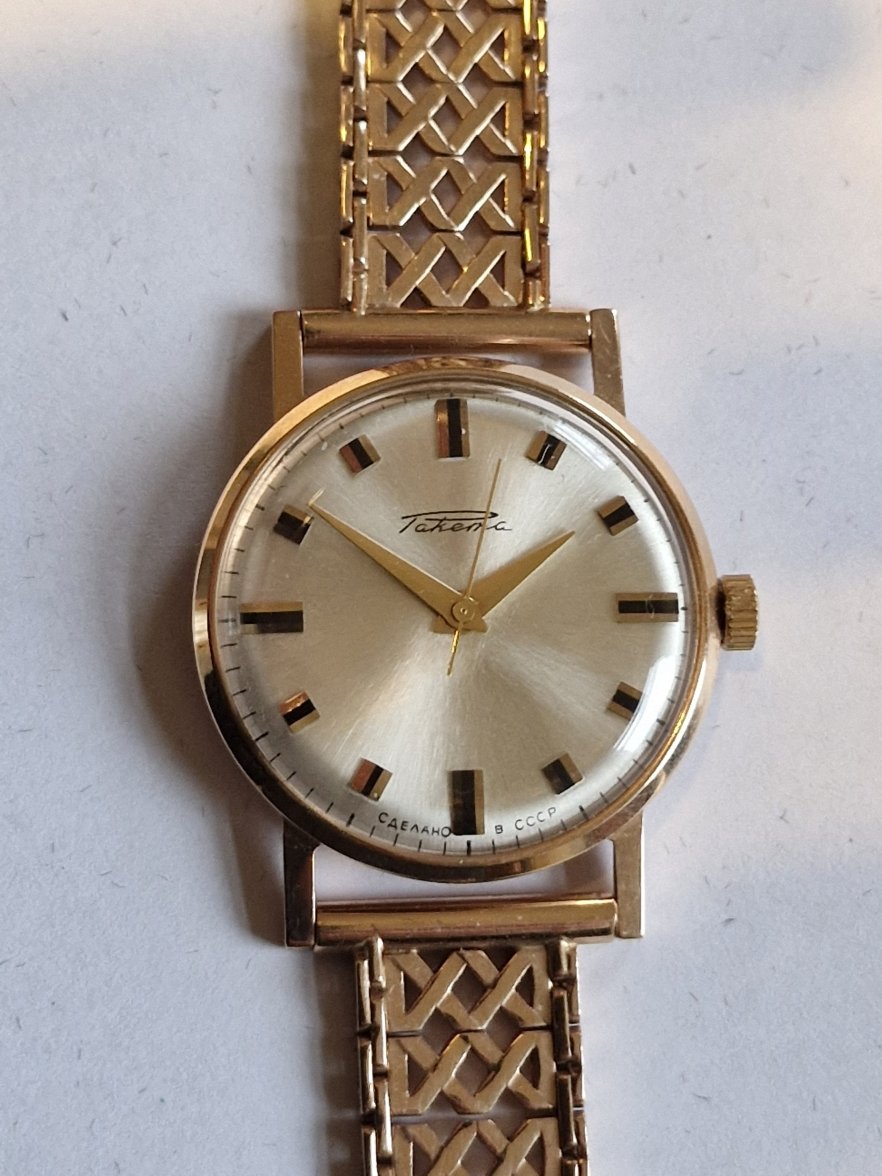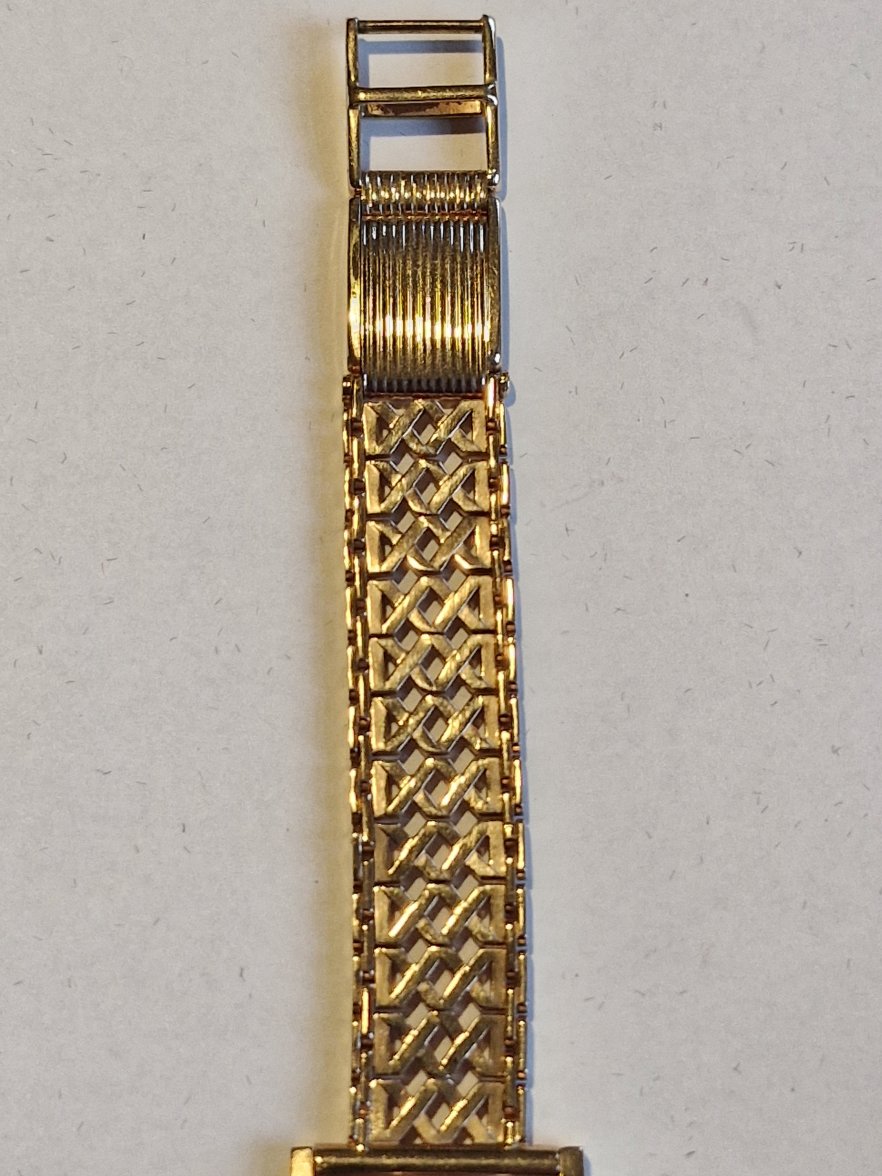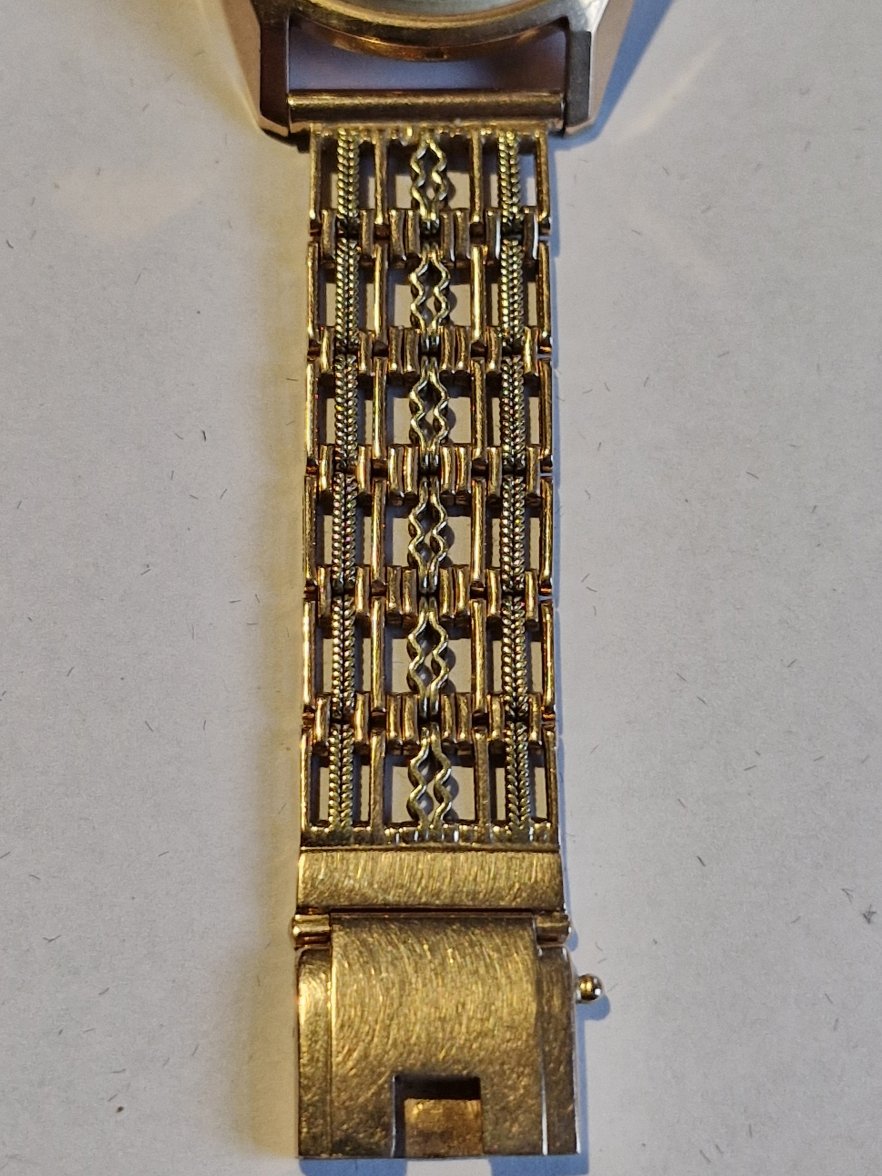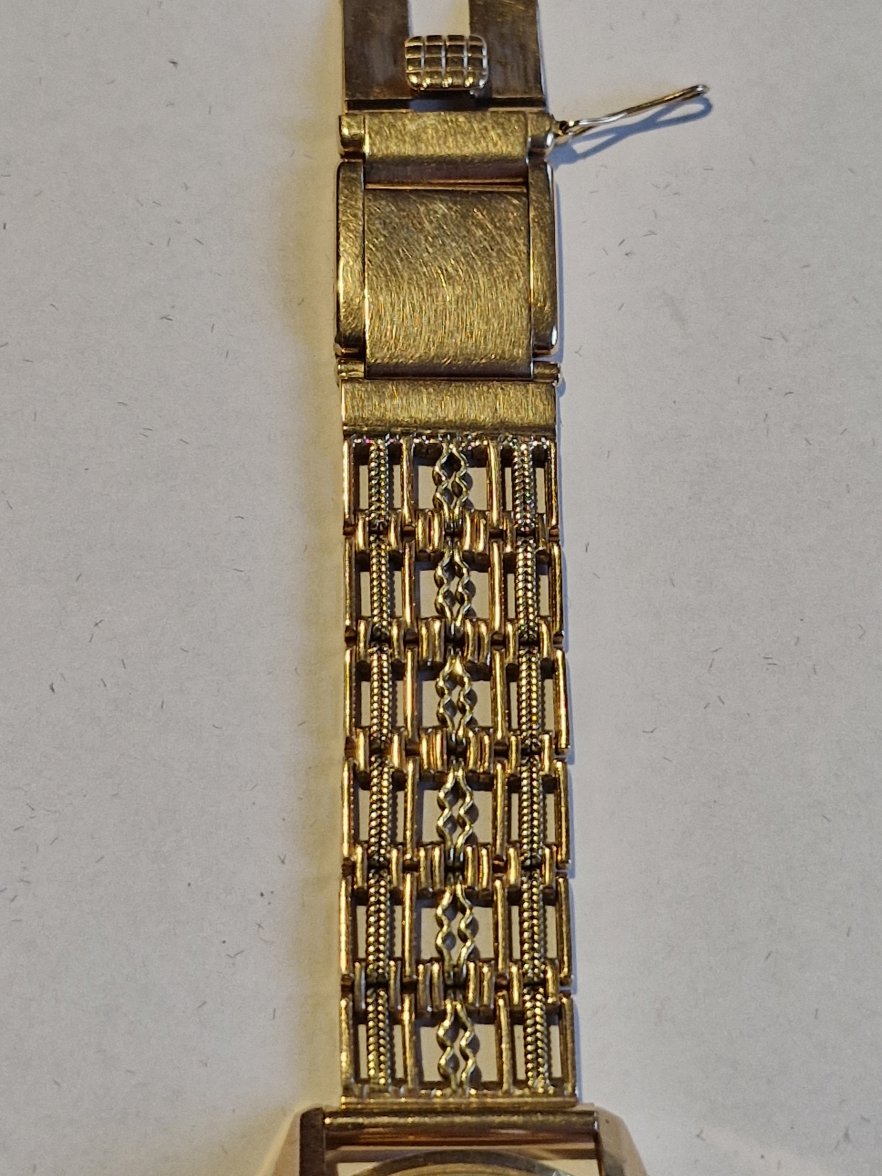mseamaster
·Today a relative gave me this nice Vostok. I don't have any other USSR watches and don't know much about them.
It says 2409 on the back. Is this the model or the movement? A forum I found on the web says it's the movement but I am not sure.
The lug says AU20. I believe AU stands for gold. However I think it's most likely gold plated and not solid.(or gold filled?)
The winding sound and feel is really smooth and sounds nice. So buttery. It feels like my Omega 131.019. I think I won't service it. It's just running too well.
Crown is unsigned.The dial has nice stripes. I wonder if there are different dials like with Seiko or just one dial per model. The crystal is a bit scratched.
The dial text looks a bit.. weird. Could it be a redial?
What do you think? I also wonder when it was made.
It says 2409 on the back. Is this the model or the movement? A forum I found on the web says it's the movement but I am not sure.
The lug says AU20. I believe AU stands for gold. However I think it's most likely gold plated and not solid.(or gold filled?)
The winding sound and feel is really smooth and sounds nice. So buttery. It feels like my Omega 131.019. I think I won't service it. It's just running too well.
Crown is unsigned.The dial has nice stripes. I wonder if there are different dials like with Seiko or just one dial per model. The crystal is a bit scratched.
The dial text looks a bit.. weird. Could it be a redial?
What do you think? I also wonder when it was made.
